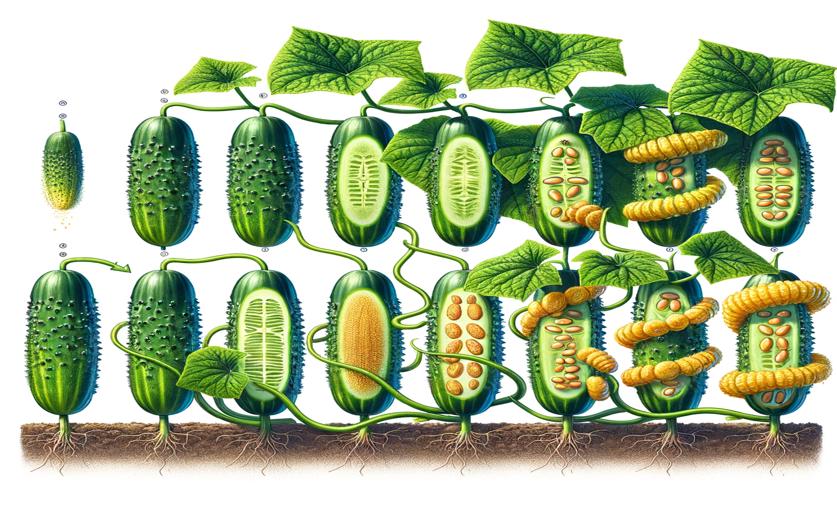
Understanding and Mapping Cold-Induced Seedless Fruit Development in Cucumbers
Greg Howard
26th August, 2024

Image Source: Natural Science News, 2024
Key Findings
- Researchers at Nanjing Agricultural University identified a cucumber line, EC5, that can grow fruit under cold conditions
- They discovered a gene, CsAGL11, which is less active in cold, helping cucumbers produce fruit without fertilization
- This finding can help develop cucumber varieties that yield more fruit in cold climates, benefiting farmers
AgricultureGeneticsPlant Science
References
Main Study
1) Characterization and fine mapping of cold-inducible parthenocarpy in cucumber (Cucumis sativus L.).
Published 23rd August, 2024
https://doi.org/10.1016/j.plantsci.2024.112237
Related Studies
2) Down-regulation of TM29, a tomato SEPALLATA homolog, causes parthenocarpic fruit development and floral reversion.
Journal: Plant physiology, Issue: Vol 130, Issue 2, Oct 2002
3) The miR166-SlHB15A regulatory module controls ovule development and parthenocarpic fruit set under adverse temperatures in tomato.



 11th August, 2024 | Greg Howard
11th August, 2024 | Greg Howard